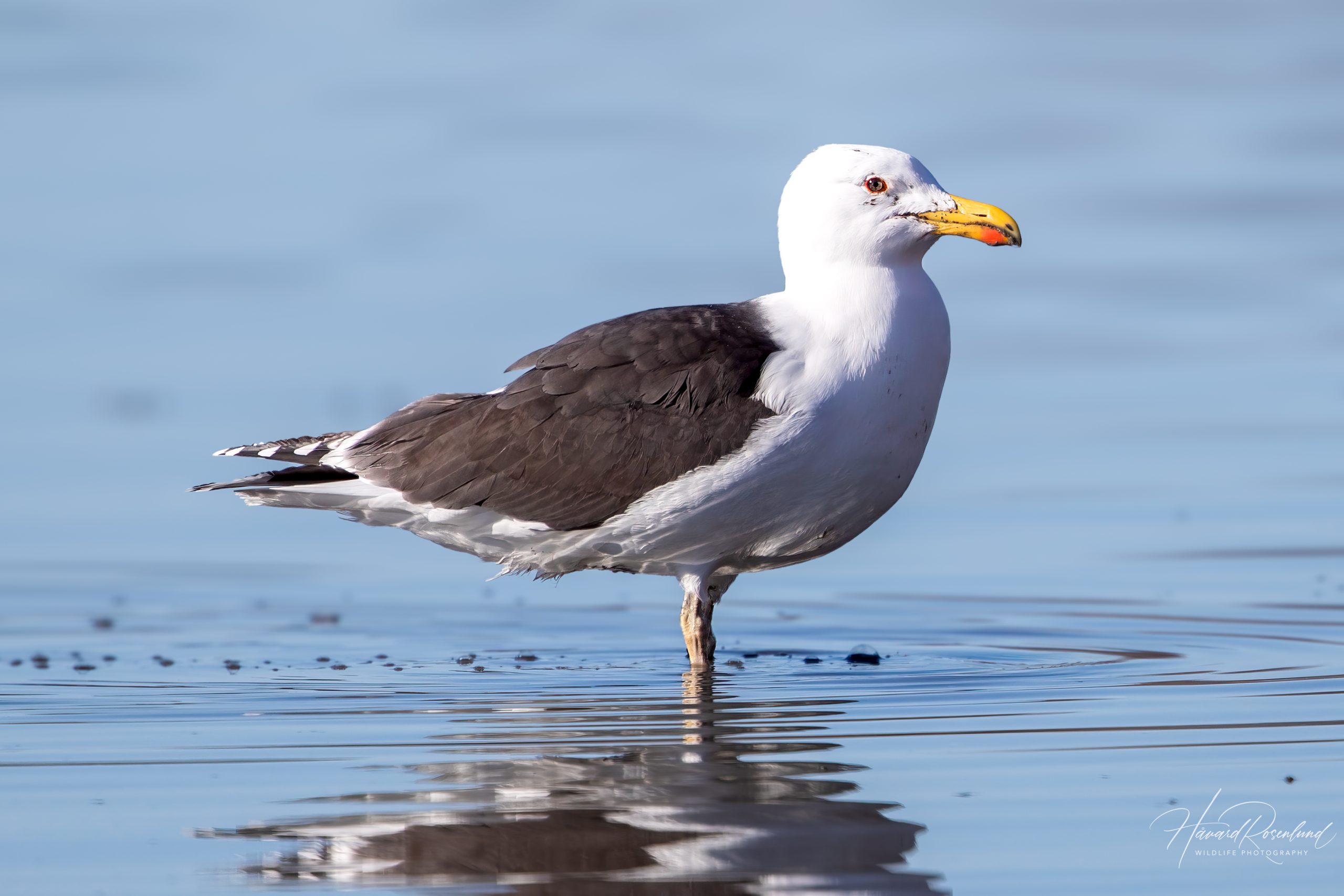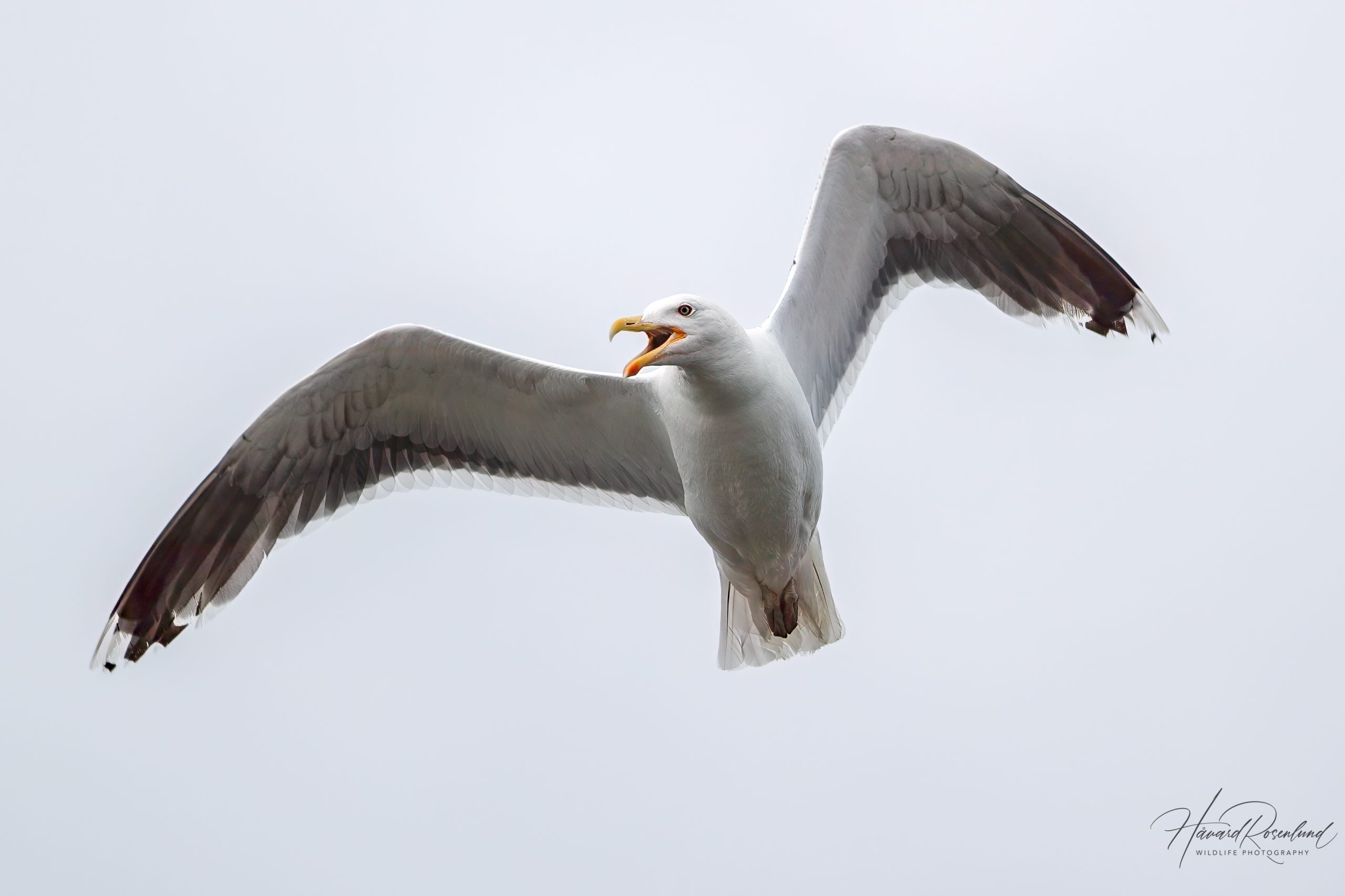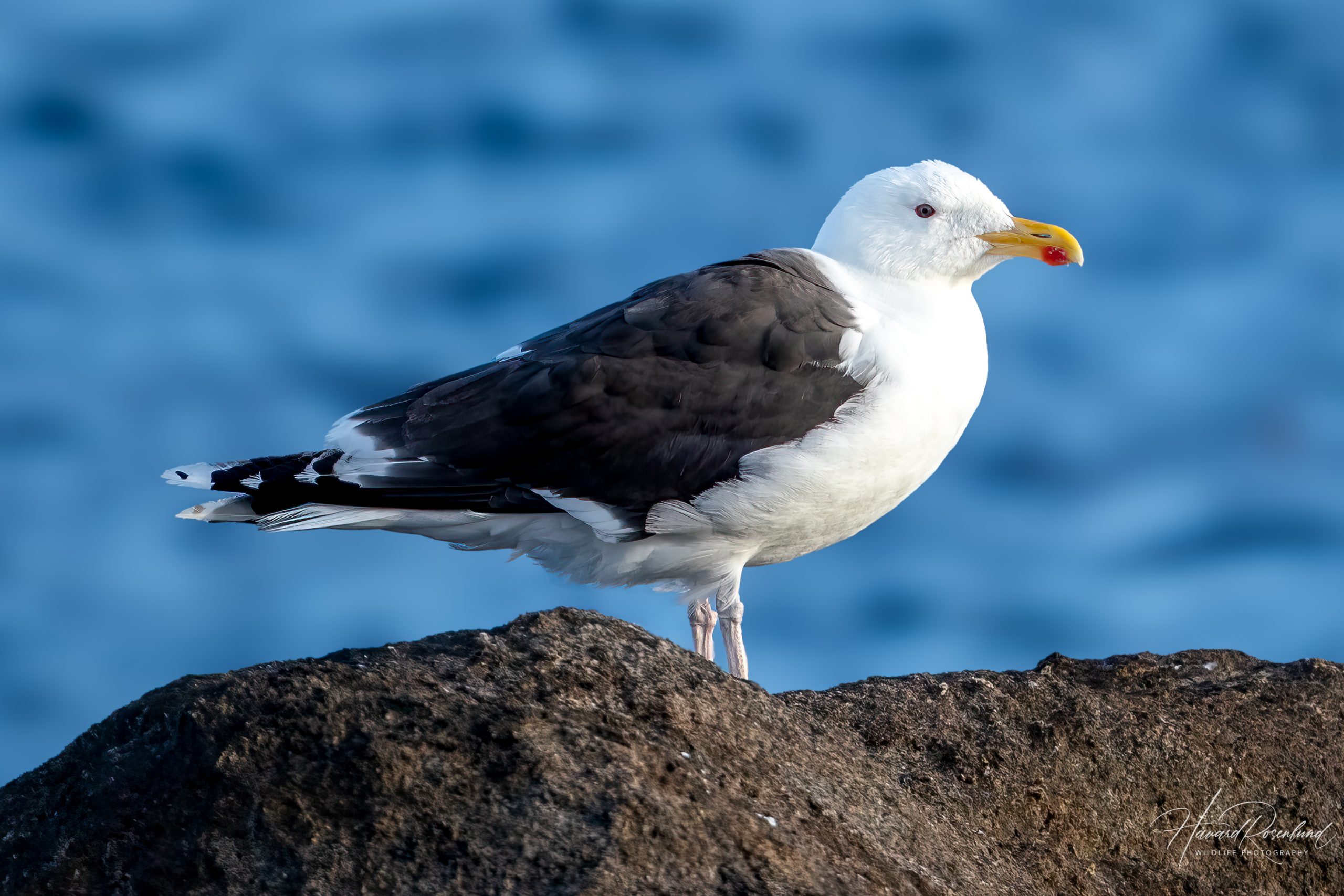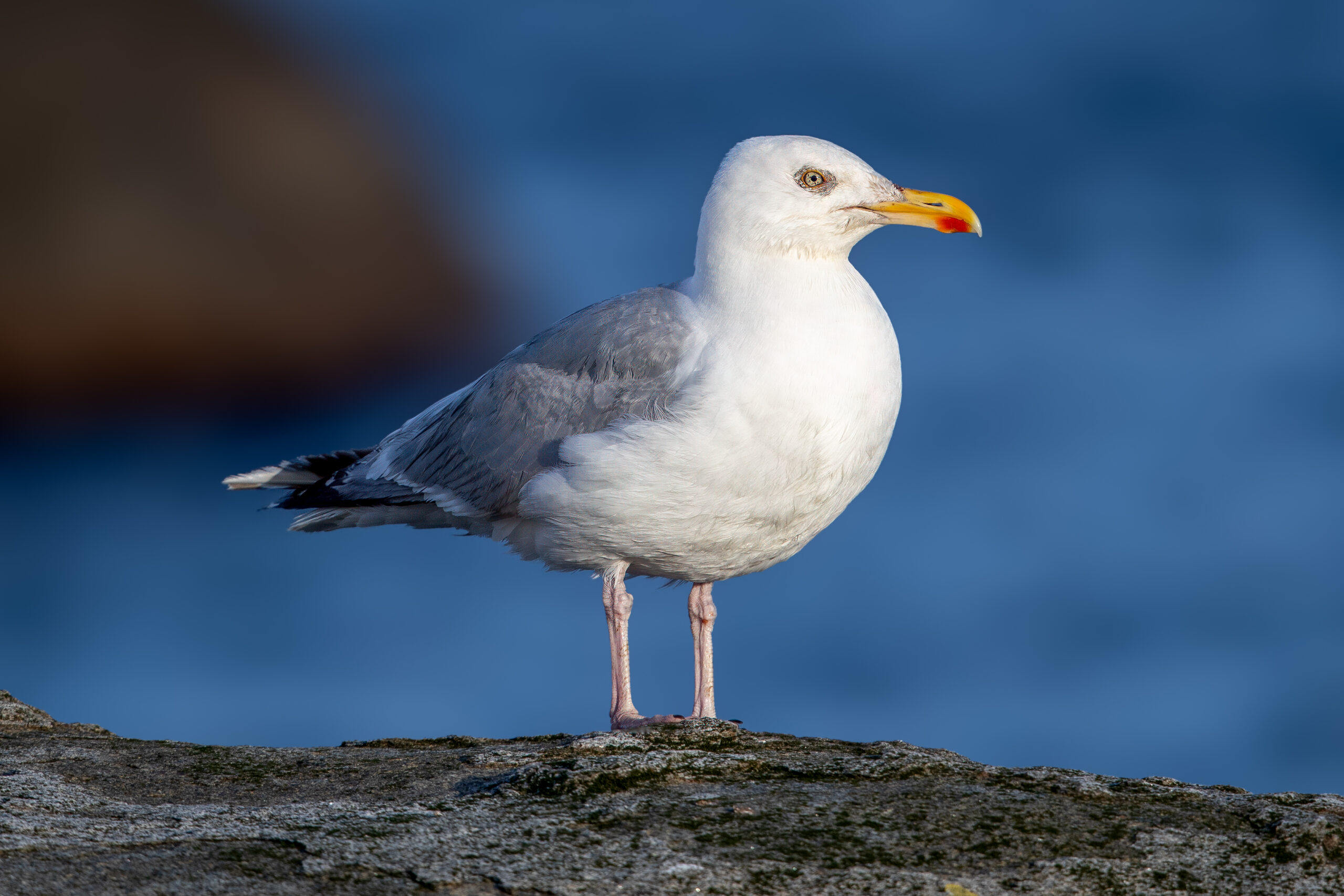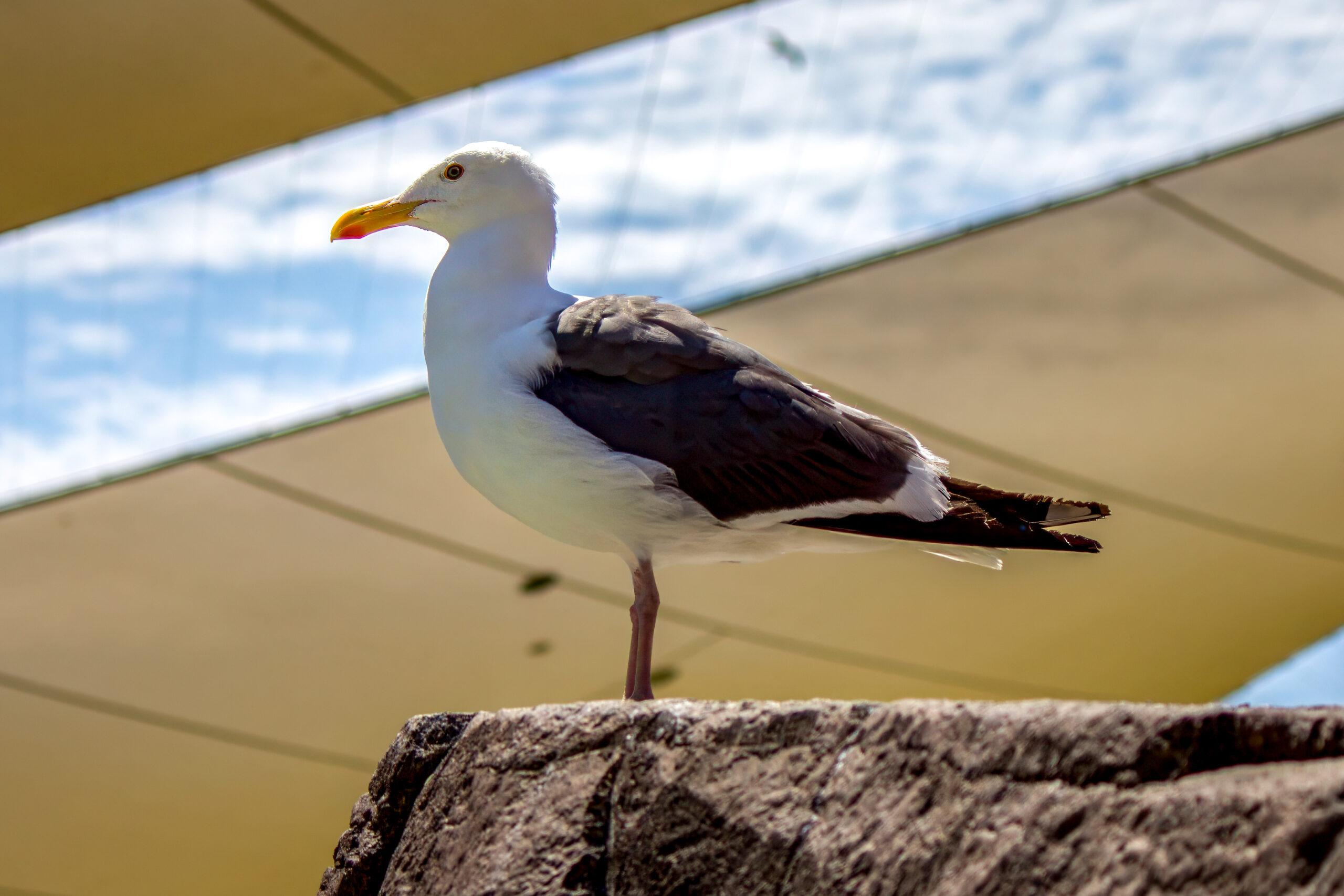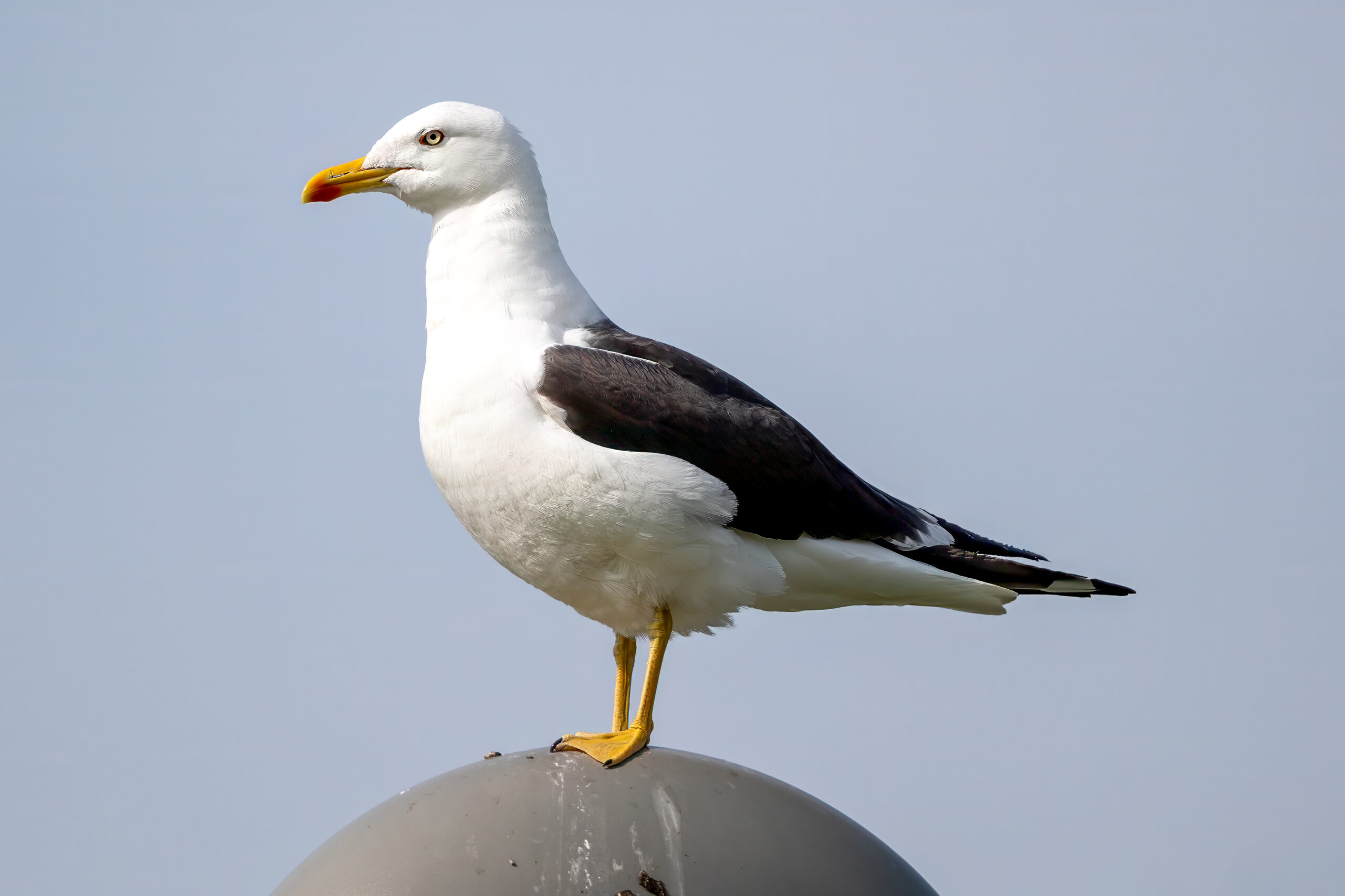Description
The great black-backed gull (Larus marinus) is the largest gull in the world, with a robust build and imposing presence. It is found across the North Atlantic. It breeds along the coasts of Europe, from Scandinavia to the Iberian Peninsula, and North America, from Canada to the northeastern United States. During the non-breeding season, some populations migrate southward, extending their range to the southern United States and the Mediterranean.
Adult birds have an appearance characterized by a white head and underparts, contrasting with a black back and wings. Their legs are greyish pink, and the bill is yellow with a red spot on the lower mandible. Juveniles are mottled brown and take four years to attain adult plumage. In terms of size, the great black-backed gull measures between 64 to 79 cm (25 to 31 inches) in length with a wingspan ranging from 150 to 170 cm (59 to 67 inches). They typically weigh between 1.2 and 2.3 kg (2.6 to 5.1 lbs).
The great black-backed gull is similar in appearance to the lesser black-backed gull (Larus fuscus), but the former is significantly larger. The lesser black-backed gull has distinct yellow legs, a slimmer bill, and a less robust build. Additionally, the great black-backed gull’s back and wings are typically darker black compared to the often dark grey of the lesser black-backed gull, but this depends on location. The lesser black-backed gull also lack clearly visible white spots on the tip of the wings when folded.
Diet & habitat
The great black-backed gull inhabits coastal areas, islands, estuaries, and occasionally inland waters. It prefers areas with rocky shores, cliffs, and sand dunes for nesting but is equally comfortable in urban environments and fishing ports, where food is abundant. This species is a versatile feeder and opportunistic scavenger. Its diet includes fish, crabs, mollusks, carrion, and even other birds and their eggs. It is known to hunt live prey, such as smaller birds, and is also an adept kleptoparasite, often stealing food from other species.
Migration
The great black-backed gull exhibits partial migration behavior. Northern populations, particularly those breeding in colder climates, migrate southward during the winter months. They typically move to more temperate regions along the Atlantic coastlines of Europe and North America. However, populations in milder regions may remain in their breeding areas year-round. While many individuals travel relatively short distances, some may migrate over 1,000 km (620 miles) to reach wintering grounds. Migration generally occurs between September and November, with a return to breeding grounds from March to May.
Nesting
Breeding occurs from late April to June. The great black-backed gull nests in colonies or solitarily on coastal cliffs, islands, and rocky outcrops. Nests are constructed on the ground, using grass, seaweed, and other vegetation. Females typically lay 2-3 eggs, which are pale brown with dark speckles. Both parents share incubation duties over a period of about 27 to 30 days. Chicks are semi-precocial, meaning they are relatively mature and mobile shortly after hatching but still rely on parental care. The fledging period lasts about 50 to 60 days. During this time, the chicks grow rapidly and learn to forage. They remain dependent on their parents for food and protection until they are capable of sustained flight.
Status
The great black-backed gull is listed as least concern by the IUCN Red List. It has a widespread distribution and large global population, estimated to be close to a million. However, threats such as habitat degradation, pollution, and human disturbance can impact local populations. Conservation measures include monitoring population trends and protecting key breeding and feeding habitats.




